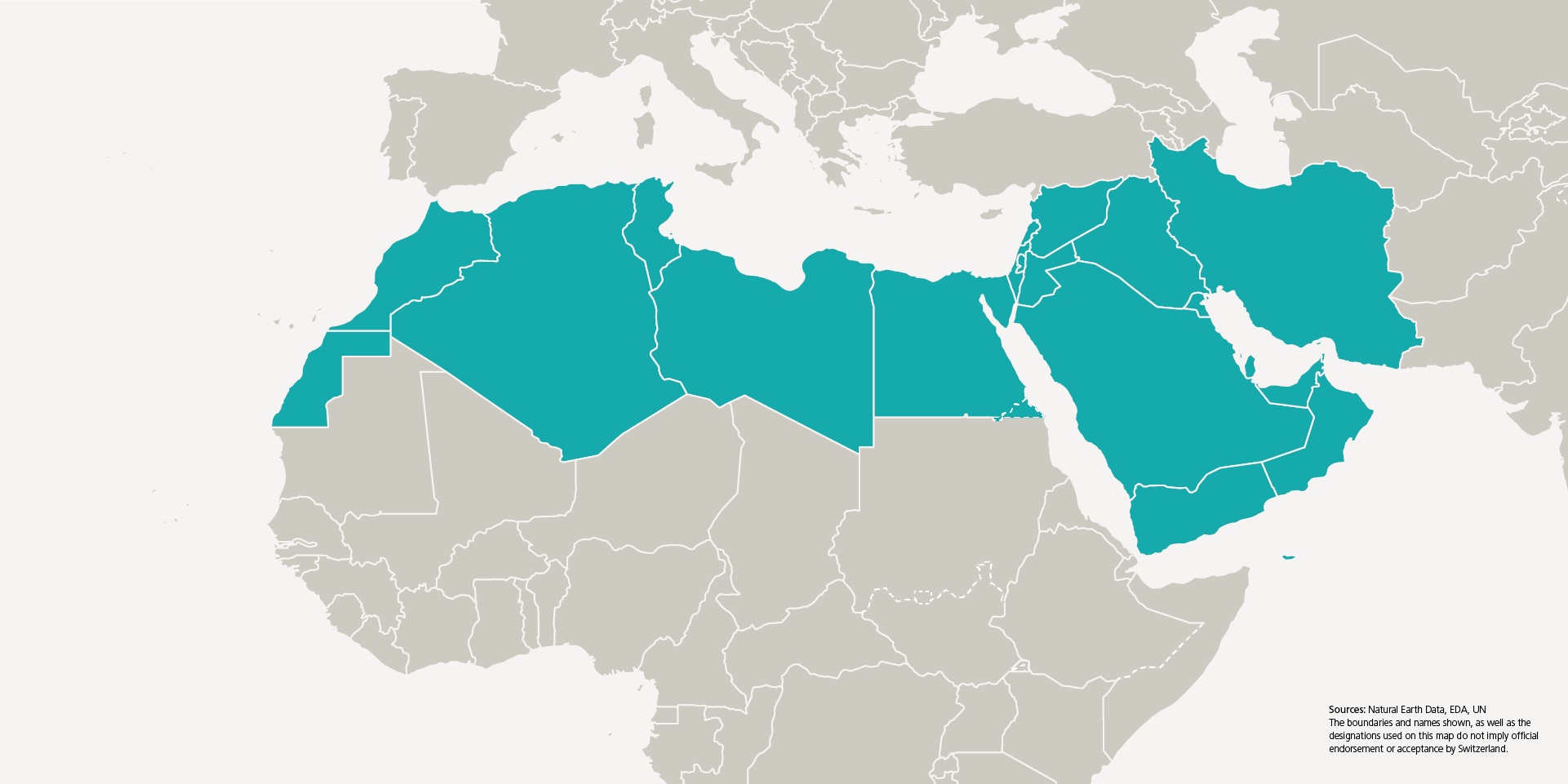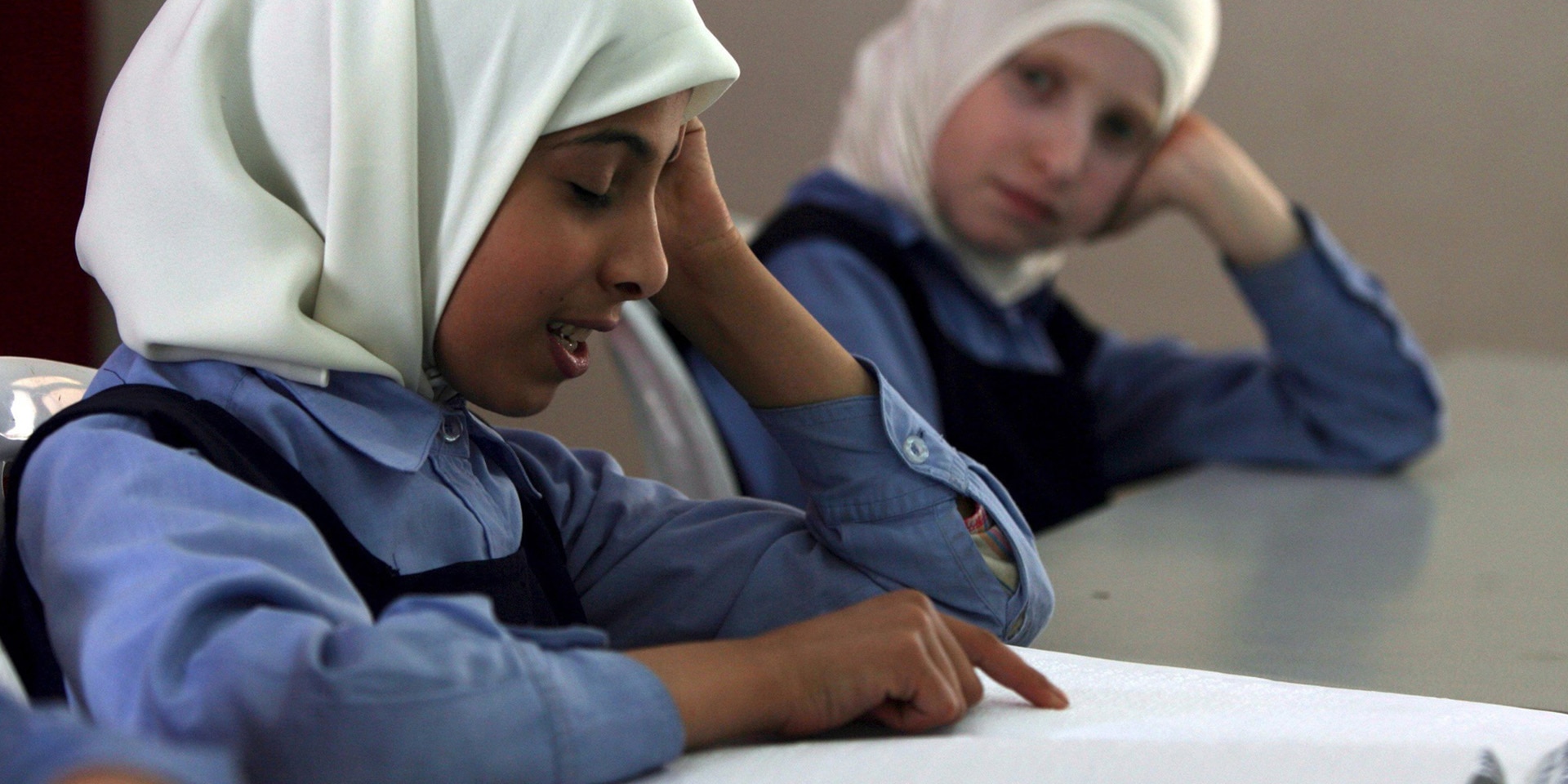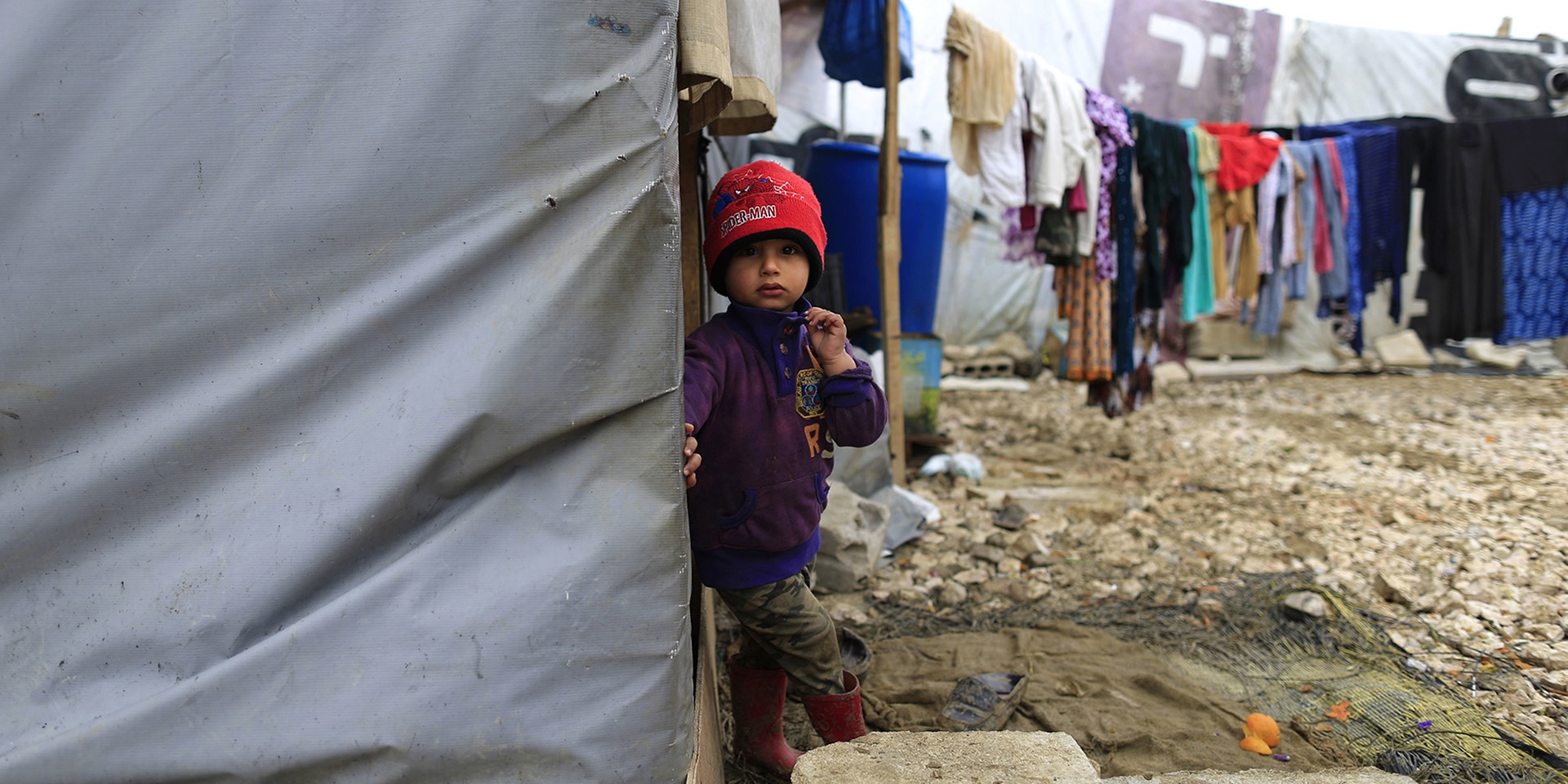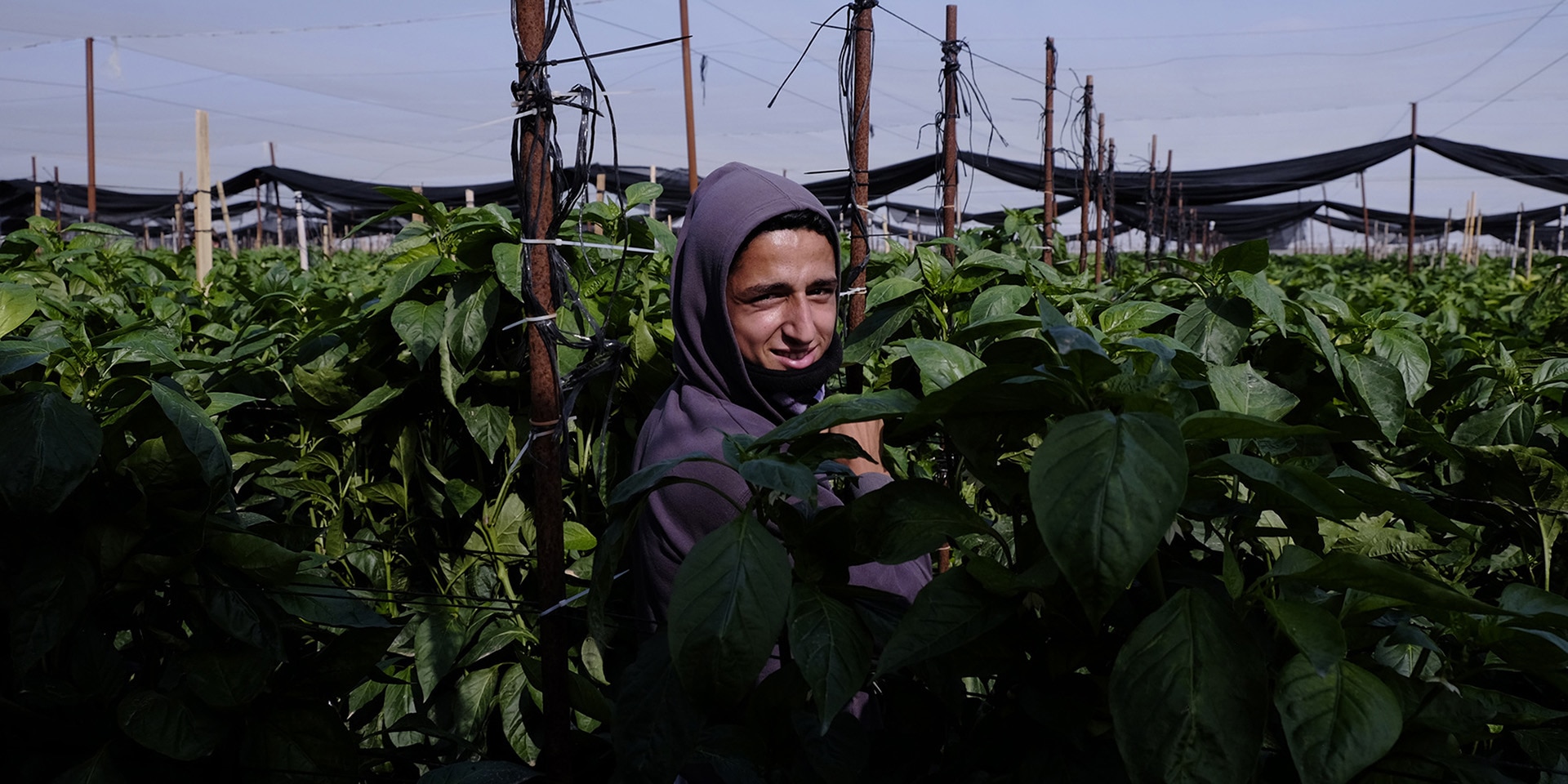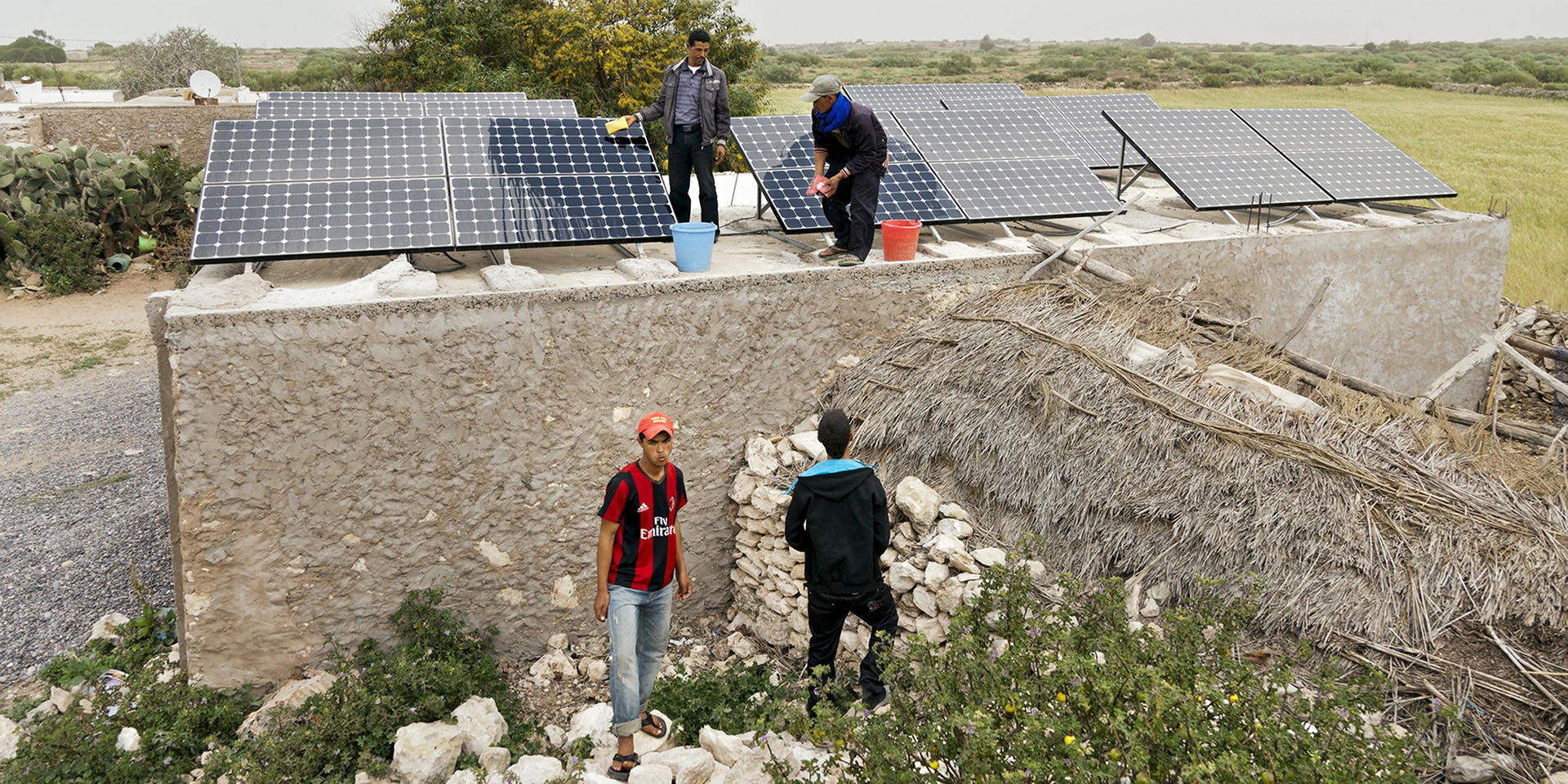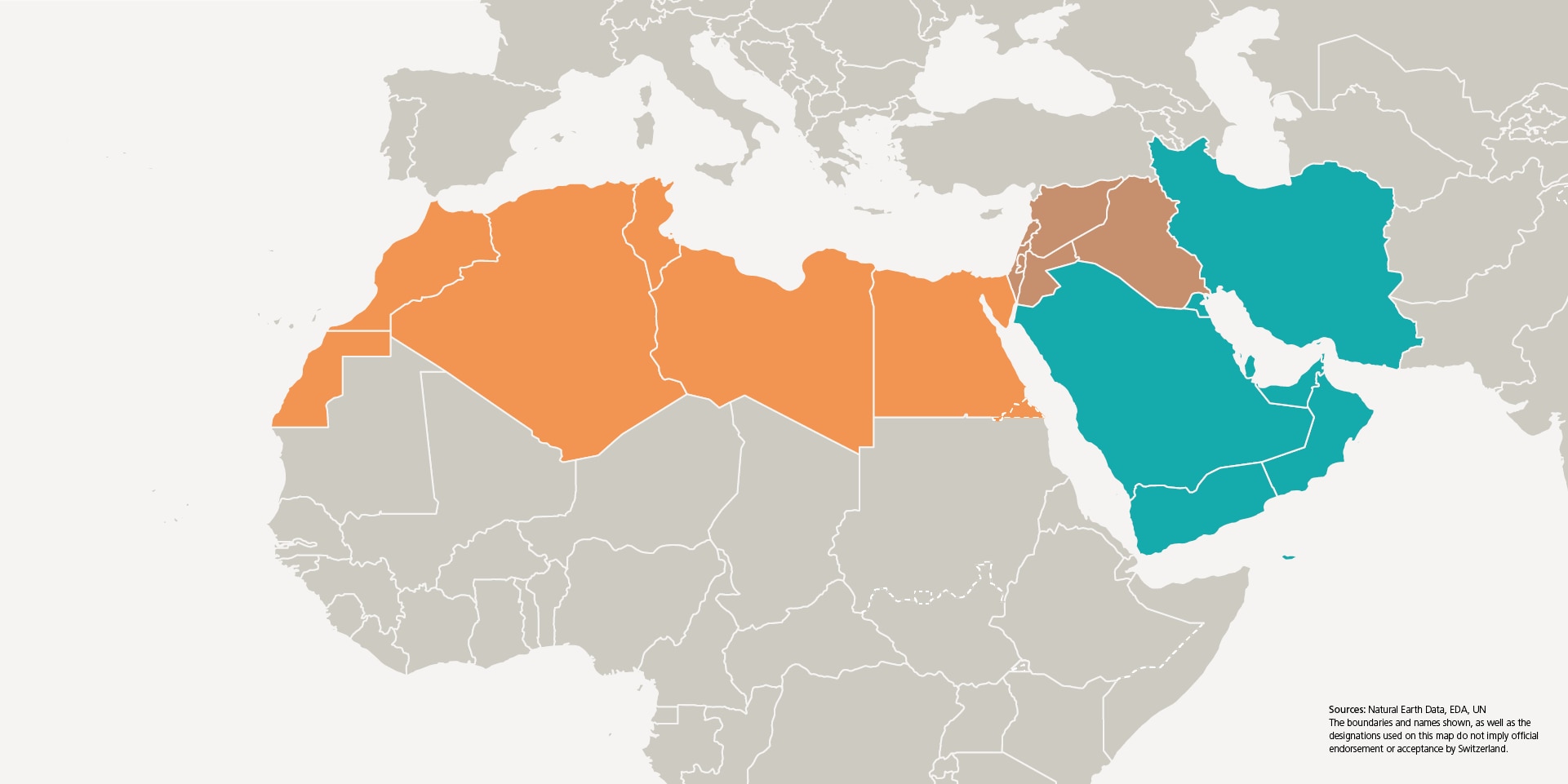North Africa
Priorities
- Peace, security and human rights
- Sustainable development
- Migration and protection of people in need
Through projects and action in the countries of North Africa, Switzerland supports migrants in the countries of first refuge and along the migration routes, and supports their integration at the local level. It is also involved in partnerships in the area of law enforcement and combating crime, and in protecting people in need in Libya. Together with the private sector, it seeks greater sectoral cooperation with the North African countries in areas such as transport, renewable energy and agriculture. It also plays an active role in efforts to reform the security sector and in training for workers in arms control.

